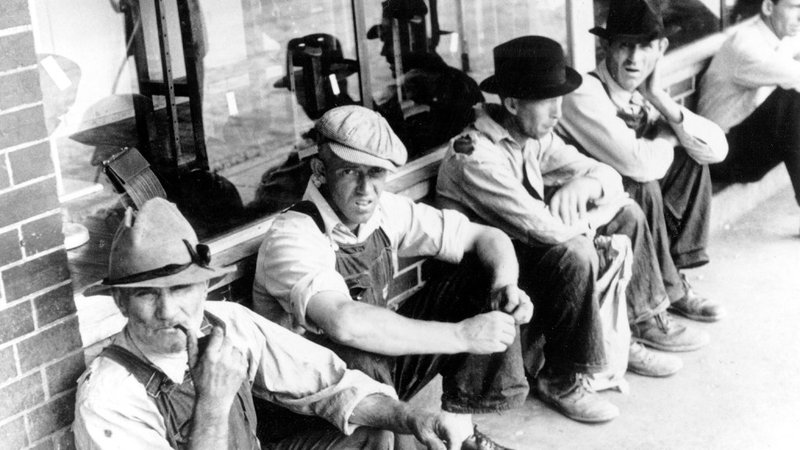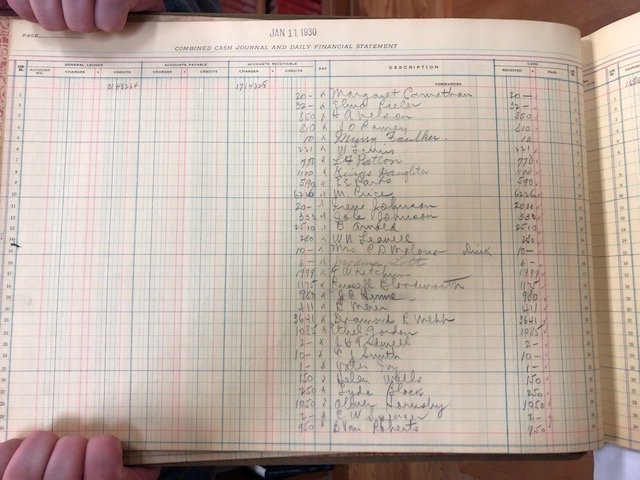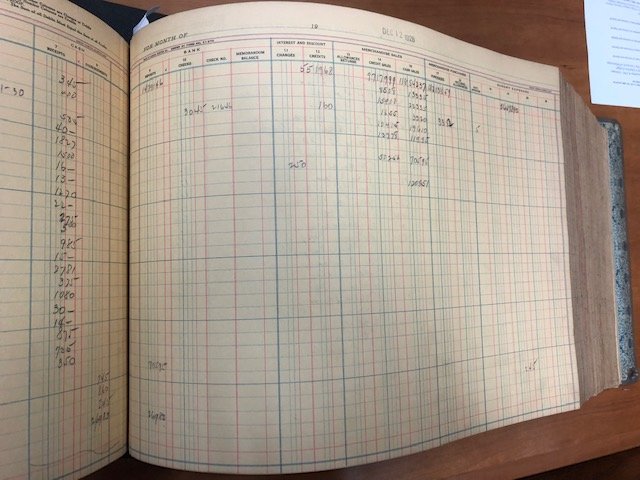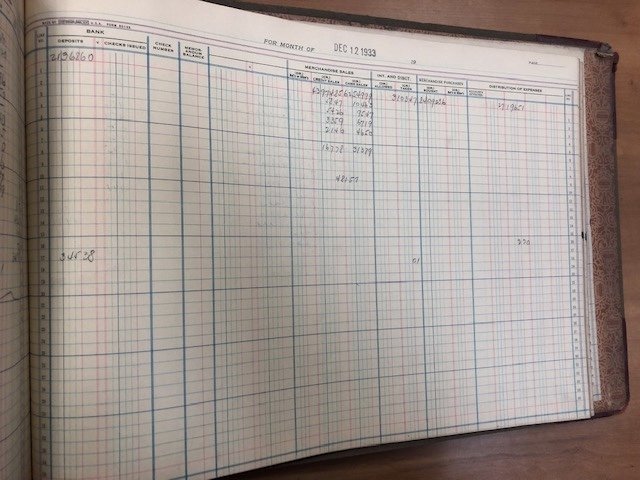Student Work
Economic Struggle During The Great Depression
By: Clara Williams

The Struggle Is Real
Throughout the span of the 1920’s to the 1930’s, the rural south underwent many economic changes. These changes heavily influenced the general public’s spending habits and day to day purchases. Neilson’s, a shop founded in 1839 in Oxford, MS, still stands on the square today and acts both as a piece of history as well as a fully functioning department store. Through the efforts made by this store and the University of Mississippi, the ledgers regarding purchases during the time period during the Great Depression have been fully preserved and reside today in the J.D. Williams library in the Department of Archives and Special Collections. In order to better understand the economic struggles that the people of Oxford were facing at this time, I analyzed the daybooks of years both during and prior to the Great Depression.
Day to day purchases at Neilson’s weren’t specifically labeled, but they were frequent. Ledger 38 displays at least 30 minimum daily purchases in the year 1928, this amount nearly doubling in the following year.[1] The yearly average amount of sales taken from the end of December for the year 1927 was $18,732,913, and in a similar fashion, $18,273,895 in 1928. Cash purchases were much more popular than credit during this time, with a nearly $9,000,000 difference.[2] Prior to the Great Depression, the “roaring twenties” were in full swing. Not only were the purchases more frequent, but they were much more costly as well. People were spending on average $25-30 with each purchase from Neilson’s. After the crash, not only did sales drop, but the average amount of money spent decreased to only about $10 or less.[3]
In 1929 when the stock market crashed, buying habits took a turn. To gage these changes in purchases, I turned to Ledger 38 and 39 to compare the years directly before and after the crash in October. According to the online journal, Britannica, wholesale price index during the Great Depression declined by 33% (Pells and Romer 2019, par. 2). These numbers closely align with Neilson’s sales in the following years. Even those who managed to maintain jobs during this period still watched their income diminish by a third.[4] This, in turn, led to essential purchases only. On December 12, 1929, credit sales dropped drastically while cash sales increased.[5] This was more than likely due to common problems during this era such as bad checks and customers unable to repay their debt in the midst of this struggling economy. Ledger 39 shows a drastic decrease in sales overall, along with an increasingly smaller gap in the cash and credit sales. According to Neilson’s Daybook 38, credit sales alone for the year before the crash in the month of December in 1928 were $57,252.[6] Only three years later, this number decreased by a drastic $40,474, leaving around only $15,000 in profits.[7]
No town or country was left untouched or unscathed by the effects of the Great Depression, especially Oxford. Letters to Congressman Colmer asking for assistance throughout Mississippi are hopeless and accurate reflections of the burdens placed upon these small, rural towns (Mississippi History Now 2017).[8] Approximately ten years later, the country’s economy began to improve and more jobs became available. However, thanks to the preservation of Neilson’s Department Store records, historians today can catch a glimpse into the financial and economic hardships that Oxfordians faced during this time period.

Ledger 39, January 11, 1930 from Neilson’s Collection, Department of Archives and Special Collections, The University of Mississippi Libraries.
Ledger 38, December 12, 1928 from Neilson’s Collection, Department of Archives and Special Collections, The University of Mississippi Libraries.

Ledger 38, December 12, 1928 from Neilson’s Collection, Department of Archives and Special Collections, The University of Mississippi Libraries.

Ledger 39, December 12, 1933 from Neilson’s Collection, Department of Archives and Special Collections, The University of Mississippi Libraries.
[1] Ledger #38 Day Book, 12 December 1928, Neilson’s Collection, Department of Archives and Special Collections, The University of Mississippi Libraries.
[2] Ledger #38 Day Book, 12 December 1927, Neilson’s Collection, Department of Archives and Special Collections, The University of Mississippi Libraries.
[3] Ledger #39 Day Book, 12 December 1933, Neilson’s Collection, Department of Archives and Special Collections, The University of Mississippi Libraries.
[4] Richard H. Pells, Christina D. Romer, “Great Depression,” Encyclopedia Britannica, last modified January 2, 2019, accessed January 7, 2019, https://www.britannica.com/event/Great-Depression.
[5] Ledger #38 Day Book, 12 December 1929, Neilson’s Collection, Department of Archives and Special Collections, The University of Mississippi Libraries.
[6] Ledger #38 Day Book, 12 December 1928, Neilson’s Collection, Department of Archives and Special Collections, The University of Mississippi Libraries.
[7] Ledger #39 Day Book, 12 December 1933, Neilson’s Collection, Department of Archives and Special Collections, The University of Mississippi Libraries.
[8] “Depression and Hard Times in Mississippi: Letters,” Mississippi Historical Society, accessed on January 7, 2019, http://www.mshistorynow.mdah.ms.gov/articles/221/index.php?s=extra&id=223
